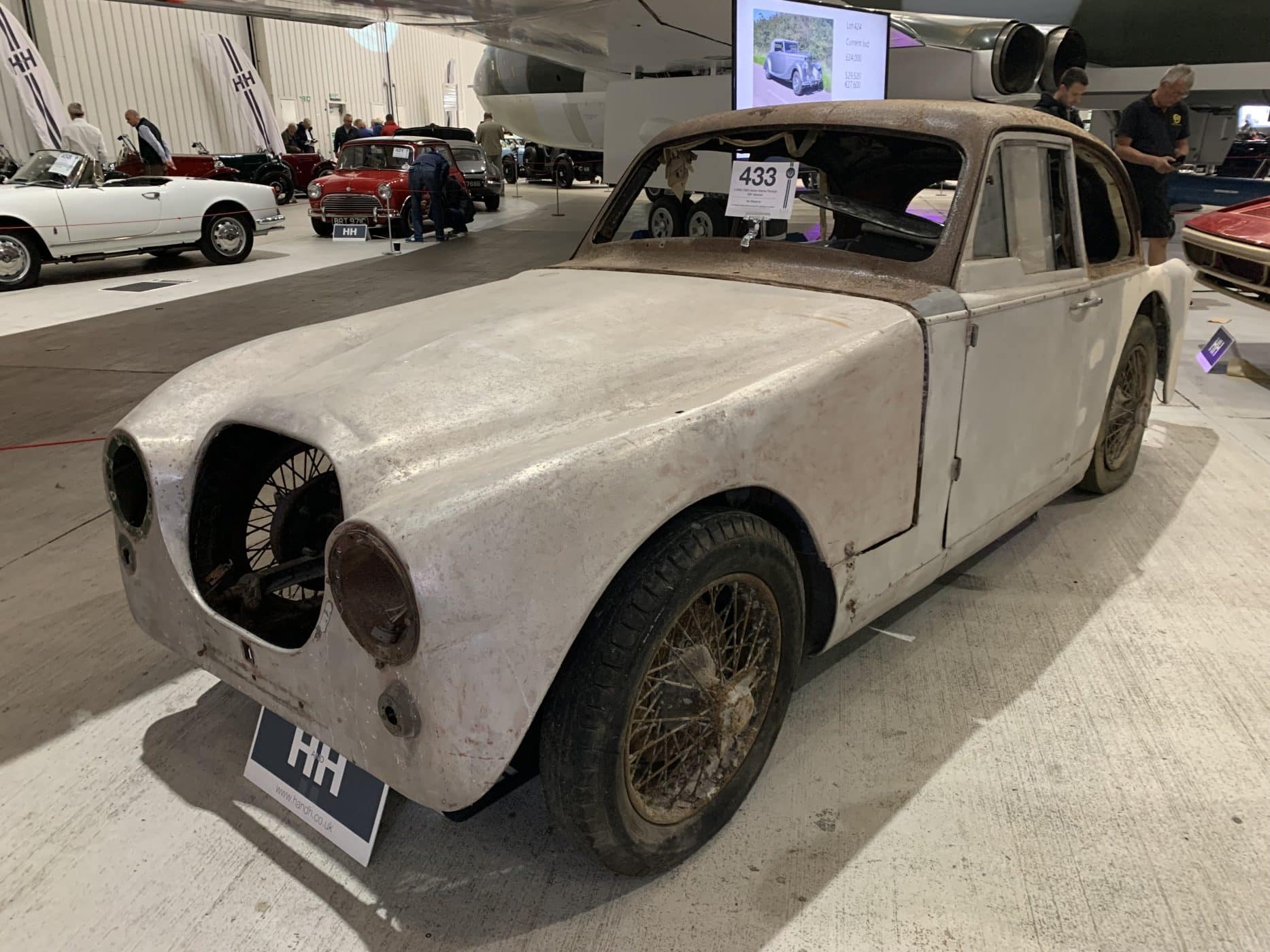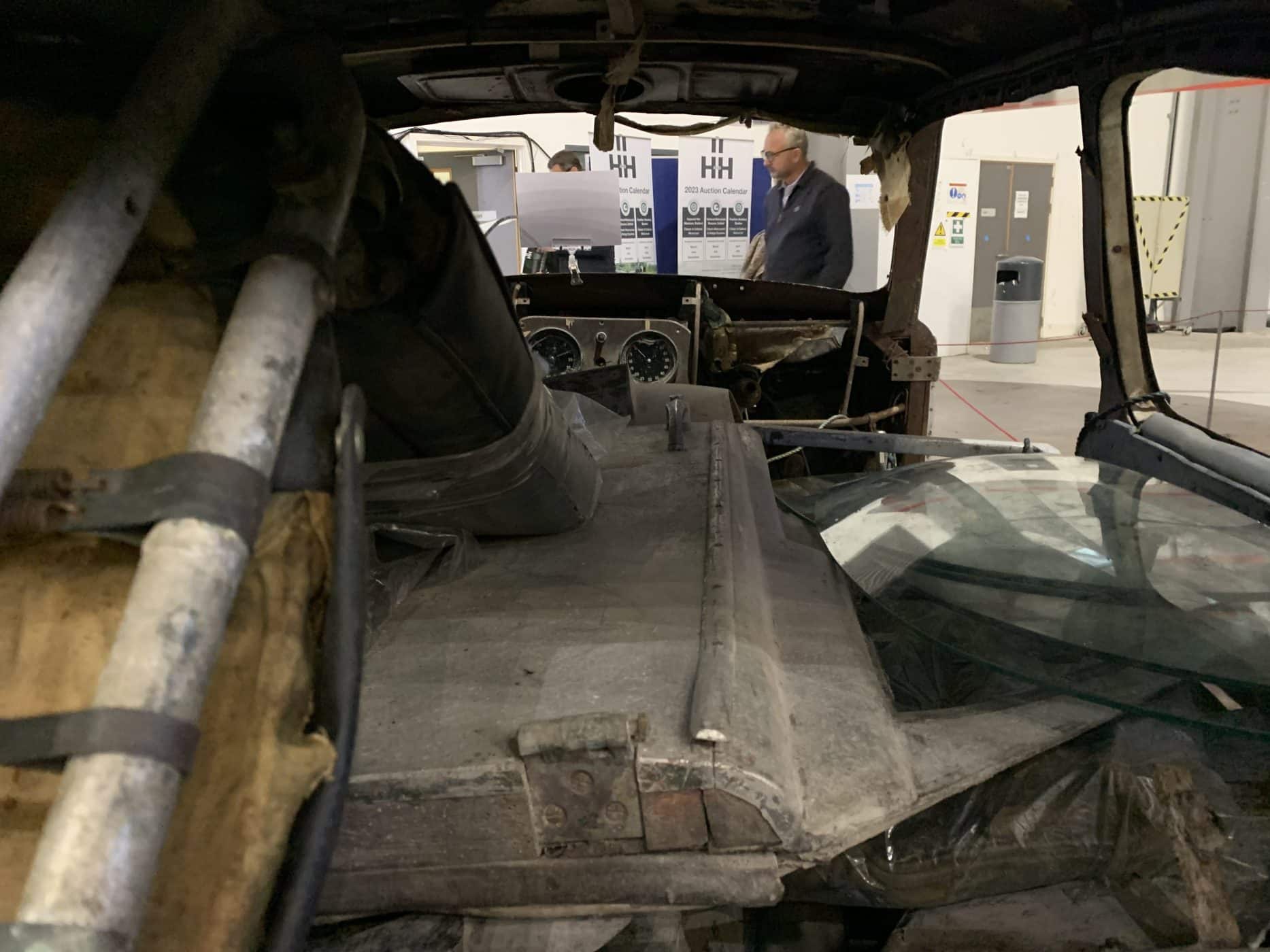At the recent 30th Anniversary sale hosted by H&H, a very special and unique vehicle was up for sale. The 1950 (1961) Aston Martin-Triumph DB1 Special.
The Story Of The Aston Martin-Triumph DB1 Special
The roots of the story can be traced back to World War II when the Aston Martin Company was under the ownership of R.G. Sutherland. Just before the war began, the company’s chief engineer devised a 2-litre (1970cc) 4-cylinder pushrod engine, which boasted a 90 BHP output. Dr Rollason, the current owner of the vehicle, suspects that there might have been intentions to supercharge it. Following the war, production commenced, leading to the casting of approximately 70 engine blocks and the construction of 18 cars. One of these cars, driven by Sir John Horsfall, secured Britain’s first significant post-war motorsport victory at Spa in 1948.
At the same time, the company came under the ownership of David Brown, who subsequently acquired the Lagonda company. This acquisition led to the introduction of a 6-cylinder twin overhead camshaft engine that had been designed by W.O. Bentley. This 2590cc engine produced 105 BHP at 5000 RPM in standard form and 120 BHP in “Vantage” form. These engines went on to power future Aston Martin models, which later became known as the DB2. Interestingly, the initial 18 cars were retrospectively designated as DB1s, despite their design predating David Brown’s involvement.
While many of the engine blocks were assembled into engines, others served as parts cars for pre-war 2-litre models during servicing. Some were incorporated into some very interesting variants, but a considerable number of blocks remained untouched before eventually finding their way to a local scrap dealer named Coleys.
This Special Car
The engine in this vehicle, number 19, came into the possession of Aston Martin expert Dudley Coram, who later passed it on to Tony Hills, a member of the Aston factory team. This engine was installed in Mr. Hill’s 1934 Triumph Gloria. This happened with assistance from a young apprentice called Tony Tocock. During the early 1950s, the car was rumoured to have even served as a daily commuter to the factory. After Mr. Hill’s ownership, the location of the car is something of a mystery.
Around 1960, the vehicle was acquired by Mr. K.P. Brewer of Thorpe Leas, Egham Surrey. The original bodywork (from the Gloria) was replaced with the body that is still on the car – made from aluminium and steel. After this transformation, Surrey County Council assigned a new chassis number (SYC 91-4/2264) and the registration number 788 VPG to the vehicle, which had originally been registered as AUB 485. The body, which had been repaired following an accident, is attached to a modified tubular frame. The bonnet currently on the car has clearly been replaced and is lacking in quality compared to the rest of the vehicle. The steel roof was from an Austin A35, with the rest being hand-finished.



An Interesting Idea
Designer Frank Gerald Feeley was a member of Sir David Brown’s Lagonda team and had a role in the design of this new generation of Aston Martins (the 6-cylinder engine DB2 onwards) after R.G. Sutherland sold Aston Martin Ltd. It is very possible that this body was actually one of Feeley’s design practices that may have been damaged during the testing process before being repaired and fitted onto the Aston Martin/Triumph Gloria crossbreed.
Originally, in its Triumph Gloria form, the car passed an MOT in March 1961, likely one of the earliest MOTs on record. Officially, it was registered as an Aston Martin on June 22, 1961, but the subsequent ownership history remains somewhat elusive. Notably, AMOC racer Shaun Magee had possession of the car at one point, using it as a source of emergency spare parts for his DB1. Magee has said that the front seats of the car were originally in a DBR racer.
Aston Martin-Triumph DB1 Special
In 1997, the current owner purchased the car from David Wynne of Wimborne Dorset. The actual transfer of ownership took place in Poole though. The car was sent to a friend for restoration, but unfortunately, the project stalled due to the friend’s illness. The car was then retrieved to its current location, where it has remained in project form ever since. At the time, the engine was operational, and although the car is nearly complete, it is in need of restoration. The possibilities include rebodying it as a super tourer or retaining its unique saloon style, but this certainly presents an exciting opportunity for a collector or enthusiast looking to acquire what could be considered an “after-hours factory car,” with major historical significance.
The vehicle was sold with a comprehensive history file containing a vast collection of invoices dating back to 1961, communications with Surrey County Council regarding its registration, numerous exchanges with Aston Martin concerning its origin, and the fascinating story behind its build, among other valuable records.




